The Best Movies Of 2022

Viola Davis in "The Woman King," Michelle Yeoh and Ke Huy Quan in "Everything Everywhere All At Once," Daniel Kaluuya in "Nope" and Robert Pattinson in "The Batman"
There’s been a lot of talk about on-screen representation that is too often misunderstood as characters that are more symbolic of a reckoning or an issue than human ― subjects that are more righteous than complicated. The great films in 2022, however, have largely obliterated that pattern with stories grounded by their particularity.
They stir audiences in ways that are uncomfortable, enlightening, entertaining and even validating.
Those narratives include the older mother reclaiming her sexual agency in “Good Luck to You, Leo Grande,” the 19th century African female warriors protecting their home in “The Woman King,” and the Black comic book artist looking for love in an animated version of New York in “Entergalactic.”
There’s also the story of a young Mexican expectant mother frightened by the conformity of her life in “Huesera” and a Chinese American mom who embarks on a fascinating journey well beyond most imaginations in “Everything Everywhere All at Once.” And there’s the 1980s Black punk rocker plagued by the thought of her own banality in “Poly Styrene: I Am A Cliché.”
These movies span eras, genres, formats, styles and languages to tell many versions of humanity with themes to which we all relate. They do what any great film should: They move us.
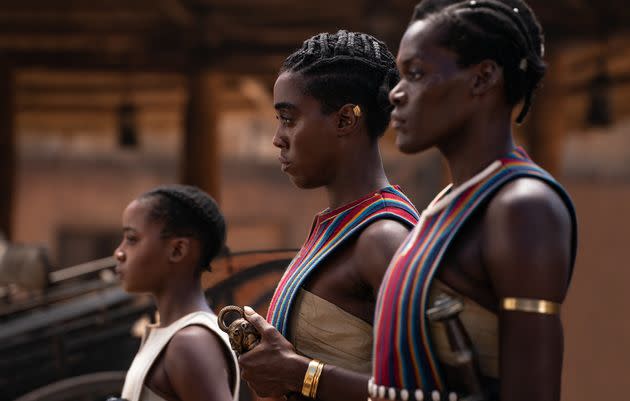
Thuso Mbedu, Lashana Lynch and Sheila Atim star in a scene from "The Woman King."
“The Woman King”
There’s nothing quite like leaving a movie theater where you’ve laughed, cried, gasped and cheered all within the course of a few hours. “The Woman King” is a glorious and brilliant film by genius director Gina Prince-Bythewood that takes you through seemingly every emotion in the phenomenal story of the Agojie, female warriors who protected the Dahomey kingdom in the 18th and 19th centuries in Africa. Viola Davis as General Nanisca is as strong as she is vulnerable; Lashana Lynch’s comedic timing and just overall stellar performance make you want to see even more of her on screen. (Seriously, please cast Lynch in more action films! And I eagerly await her as Miss Honey in the upcoming Matilda musical.) Thuso Mbedu and Sheila Atim, who played opposite each other in Barry Jenkins’ stirring “Underground Railroad,” were perfect in their performances once more. I can’t say enough about how good this film is and cannot wait to rewatch. — Erin E. Evans

(L-R): Meadow and Jabari (voiced by Jessica Williams and Scott Mescudi) in "Entergalactic."
“Entergalactic”
This animated rom-com from the mind of Kid Cudi is an actual dream. Every moment of this 90-minute film breathes color and imagination to this world of two young adults (voiced by Cudi and Jessica Williams) living and discovering the possibilities of love. Its mature themes and lewd humor make it feel very real. The best part of this film, however, is probably its simplicity. It’s a regular love story, but its Black leads, authentic writing and “Into The Spiderverse” animated look take it to the next level of creative that feels like it could open doors for more possibilities for Black stories to be told in more imaginative media. “Entergalactic” is truly a feel-good movie. And it’s impossible to only watch once. — Taryn Finley
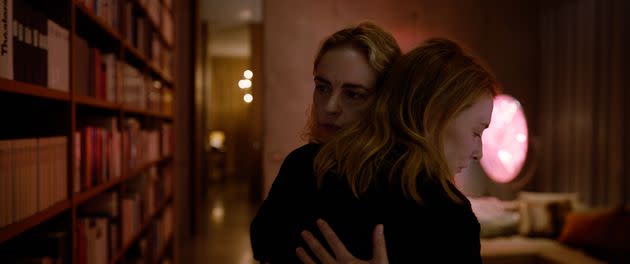
(L-R): Sharon (Nina Hoss) and Lydia (Cate Blanchett) in "Tár."
“Tár”
It’s the way this film sits in your head long after you’ve seen it. Who is Lydia Tár, really? Brilliantly portrayed by Cate Blanchett, she is the fictional yet oh-so-iconic female conductor of the Berlin Philharmonic — the first of her kind. She’s accomplished remarkable feats in the same vein as her male counterparts, so, you know, sexism isn’t a problem she acknowledges. Like every other -ism, it is something largely created by the same woke mob that is now threatening her reign with multiple sexual misconduct allegations — much to the chagrin of Lydia’s partner, Sharon (a phenomenal Nina Hoss). What’s so masterful about writer-director Todd Field’s film is its specificity. It’s not a movie that points at powerful and problematic people as it sets their house of cards on fire. This is a film about one dominant figure and the lies she tells herself (Lydia isn’t even her real name) and those around her, and the distinct and dishonorable ways she tries to preserve her throne. “Tár” is an unflinching study of one character, blowing in the wind long after her time is up. — Candice Frederick
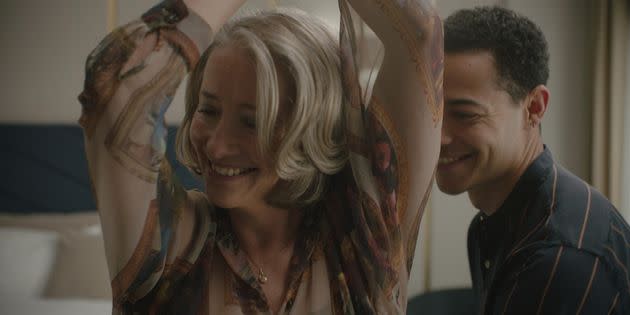
Nancy (Emma Thompson) and Leo (Daryl McCormack) in "Good Luck to You, Leo Grande."
“Good Luck to You, Leo Grande”
In case you needed the reminder, Emma Thompson is a living legend. She’s one of the few actors who could have pulled off the delicate balance of “Good Luck to You, Leo Grande,” in which she stars as a widowed, emotionally reserved teacher who hires a sex worker named Leo Grande (played by the wonderful Daryl McCormack, who was also in “Bad Sisters” on Apple TV+ this year). The pair, along with director Sophie Hyde’s deft direction and writer Katy Brand’s stellar script, anchors this charming two-hander. As a small movie shot under pandemic restrictions, it makes great use of the “two people in a room” concept, and clocking in at just over 90 minutes, it’s the perfect length too. —Marina Fang
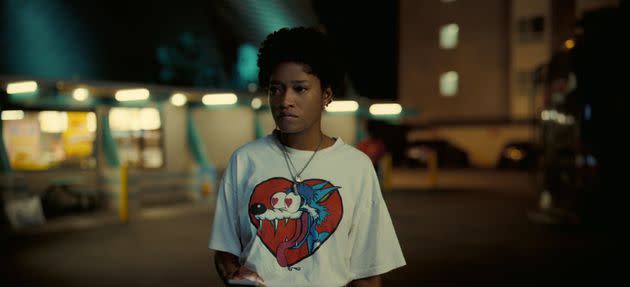
Emerald (Keke Palmer) in "Nope."
“Nope”
This is another film you won’t be satisfied with by watching only once. As his third directorial effort, “Nope” is arguably Jordan Peele’s most complex psychological thriller. It stars Keke Palmer and Daniel Kaluuya as the brother-sister duo Emerald and OJ Haywood. After their father, who trains horses for Hollywood, dies in a freak accident, they inherit his ranch and struggle to keep it afloat. When OJ suspects a UFO is at the center of chaos and destruction, he and Emerald team up to try to chase the extraterrestrial being down and capture it on camera. “Nope” raises the question of what’s at stake when we hyperfixate on people, places and things and make a spectacle of them. The film, with its many Easter eggs and eye candy, is an oxymoron in that it becomes the very thing it interrogates. Once you realize its message, you understand it’s so good it’s scary. — Finley

Will (Conrad Ricamora) and Noah (Joel Kim Booster) in "Fire Island."
“Fire Island”
I will never not be interested in a Jane Austen adaptation, whether it’s a more literal version or a modern remix. In transporting “Pride and Prejudice” to the titular gay mecca off the coast of Long Island, “Fire Island” writer and star Joel Kim Booster and director Andrew Ahn smartly did a little bit of both, taking inspiration from both classic “Pride and Prejudice” adaptations and modern Austen reimaginings like “Clueless” to create something singular. The result is a wonderfully warm, funny and sexy rom-com that will hopefully join the pantheon of great Austen adaptations. — Fang
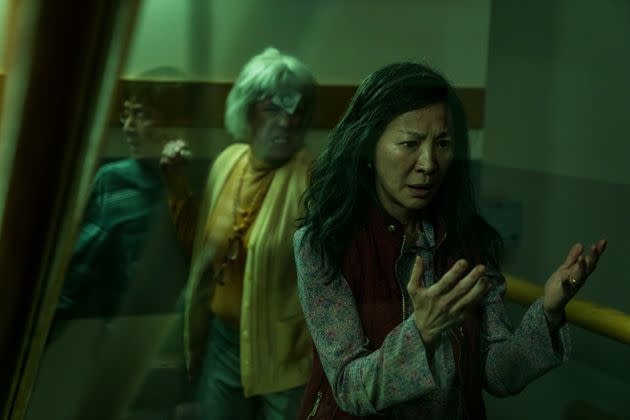
Ke Huy Quan, Jamie Lee Curtis and Michelle Yeoh in a scene from "Everything Everywhere All At Once."
“Everything Everywhere All At Once”
Like the wild, genre-bending ride the movie takes us on, it has been a thrill to watch “Everything Everywhere All At Once” become that rare, truly word-of-mouth hit throughout this year. Released all the way back in March, it’s now a major Oscar contender thanks to the audacious and wild vision of directors Daniel Kwan and Daniel Scheinert (collectively known as Daniels), and its killer ensemble cast, who each bring their unique set of skills to the table. It’s impossible not to feel pure, unadulterated joy at being able to witness the comeback story of Ke Huy Quan, whose incredible performance here marks his return to acting after 30 years. Most of all, this film is a reminder that it’s past time to give Michelle Yeoh her flowers. It’s Yeoh’s multiverse, and we’re just living in it. — Fang
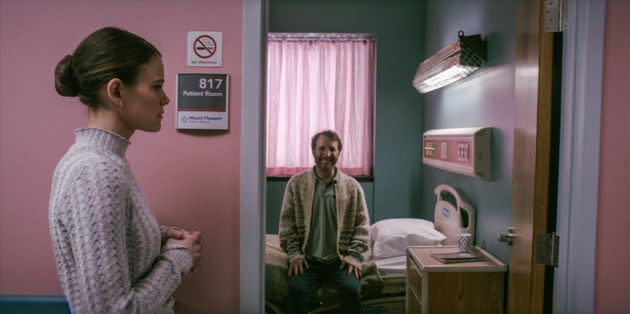
Rose (Sosie Bacon) and Carl (Jack Sochet) in "Smile."
“Smile”
This might be the most effed-up movie this year, actually. It turns a smile, one of the most innocuous things you can do, into a shrill warning of horror to come. Specifically: a terrifyingly overstretched smile signals that someone else is now inside this person’s body and whoever is in front of them is next to be killed and possessed. But “Smile,” from writer-director Parker Finn, doesn’t hinge on its shock and gore (though they are aplenty). Anchored by Sosie Bacon’s portrayal of a psychiatrist on the edge, the film deals with trauma, mental health and — a recurring theme in the horror genre — the way women are disbelieved. That latter part is especially true for women suffering from mental illness. “Smile” brings you firmly into its protagonist’s perceived state and rattles you to your core. — Frederick
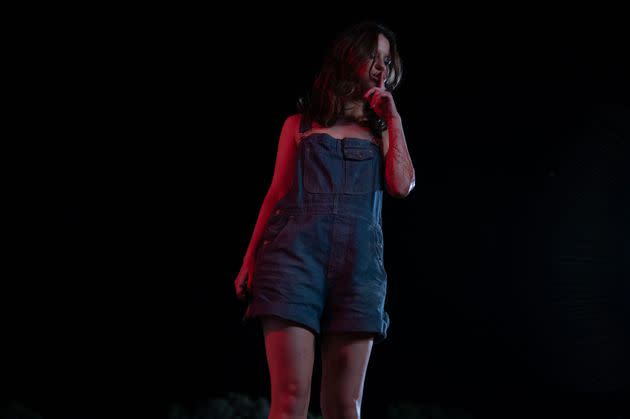
Maxine (Mia Goth) in a scene from "X."
“X”
For a long while, horror had been largely known as a trash genre with little substance beyond exploiting female bodies and scaring the living daylights out of people for fun. And if you take writer-director Ti West’s own comments to heart, there are some similarities with how porn historically has been regarded. “Perhaps horror is like one step above porn, but they’re both always outsiders,” he told Indiewire. “Even in the video store, there was the horror section that was a little weird and then there was the door to the other section.” The filmmaker very thoughtfully leans into this taboo in “X,” a movie that blends both film genres as it unapologetically assaults the puritanical mindset. Set in 1970s Texas, “X” it’s about the fictional cast and crew of a scrappy porn movie filming on location as they discuss their career aspirations and debate sexual politics. The movie is also about the murderous white elderly couple whose values and property have just been disrespected. Of course, the latter will never understand that the only heinous behavior that happens here is what they perpetuate themselves. Smarter and more layered than you might expect, “X” is an increasingly bloody trip to the pit of a conservative hell. — Frederick
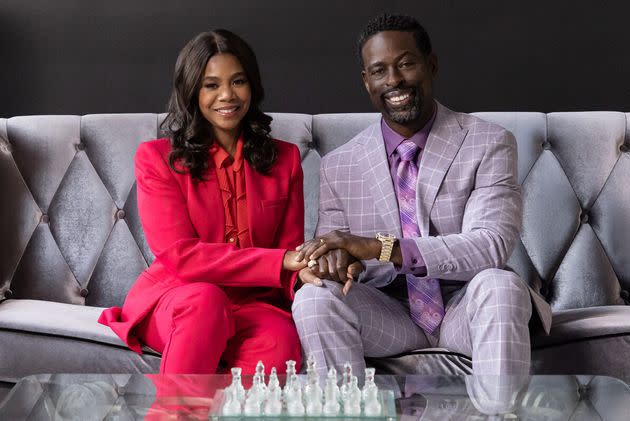
Trinitie (Regina Hall) and Lee-Curtis (Sterling K. Brown) in "Honk for Jesus. Save Your Soul."
“Honk for Jesus. Save Your Soul.”
You just knew that the very idea of a mockumentary set around a disgraced pastor of a Black megachurch and his wife was going to be a ride. Add the barely-keeping-it-together comedy of Regina Hall and a borderline sociopathic Sterling K. Brown to the mix and “Honk for Jesus. Save Your Soul” is now operating on several layers ripe for fascinating commentary. It’s not just the passive-aggressive shade thrown between competing pastor wives or that the central couple is actually filming a documentary when they really should be concerned about his sexual misconduct allegations and maybe keeping a lower profile. It’s that so much of “Honk for Jesus. Save Your Soul.” actually feels real. Like writer-director Adamma Ebo just turned the camera on, pressed record and watched the foolery unfold, unchecked. The hypocrisy, outright lies and holier-than-thou veneer come into razor-sharp focus, in part thanks to Hall and Brown just riffing off each other. What you’ll find from their characters, often when they think the camera is off, is a devastating — and sometimes horrifying — truth. All the while, Ebo’s lens remains not judgmental but patient, as if waiting for the subjects to just stack up on their own. — Frederick
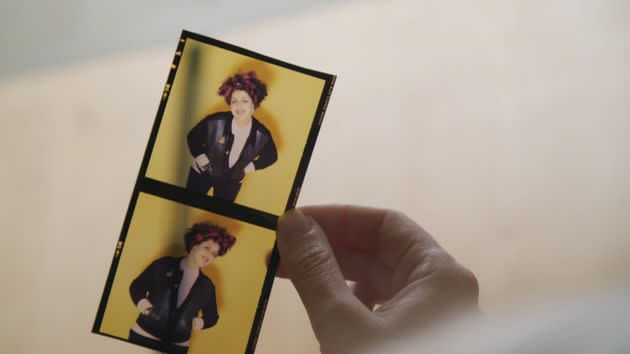
A photo reel of Poly Styrene in a scene from "Poly Styrene: I Am a Cliché."
“Poly Styrene: I Am A Cliché”
A documentary about a biracial Black punk rock musician in the 1980s U.K. is enough to spark interest from even those who never heard of Poly Styrene, or as she was born, Marianne Joan Elliott-Said. This is a film co-written and co-directed by the late musician’s daughter Celeste Bell as part of an ongoing effort to get to know who her mother was before she could no longer understand her. The musician suffered from mental illness throughout her child’s formative years. As Bell peers through her mother’s old diaries and archives, narrated by none other than Ruth Negga, Styrene’s extraordinary and sometimes solemn life comes into focus. She navigated a racist England as the young Black daughter of a white mother, and paved her own path to become the front woman of the band X-Ray Spex with braces and an afro, cementing her icon status. But what makes the documentary so interesting is its more intimate details about how Styrene felt about her own life and music; troubled by the thought that she could become a cliche in an increasingly celebrity-driven world and by her own overstimulated mind. “Poly Styrene: I Am A Cliché” isn’t simply a cradle-to-the-grave story. It exhumes the interiority of a woman who was as much admired, including by Bell, as she was misunderstood. And in the process, a daughter reconciles her relationship with her mother. — Frederick

Zelma (voiced by Dagmara Dominczyk) in a scene from "My Love Affair With Marriage."
“My Love Affair With Marriage”
Latvian filmmaker Signe Baumane quietly delivered one of the best female resistance films of the year — and it’s animated. It’s a wonderful surprise in a movie already filled to the brim with them. It’s a sprawling story that follows the life of Zelma (voiced by Dagmara Domińczyk), a girl who is destined to walk down the much-tread path of her ancestors to be married to a man and taken care of. But the more she grows up and experiences new things, including bullies at school and terrible boyfriends, the more she realizes that what’s destined for her may not be for her. Her body even resists the thought of such conformity. “My Love Affair With Marriage” is an exuberant and complex movie about the journey to female rebellion. — Frederick
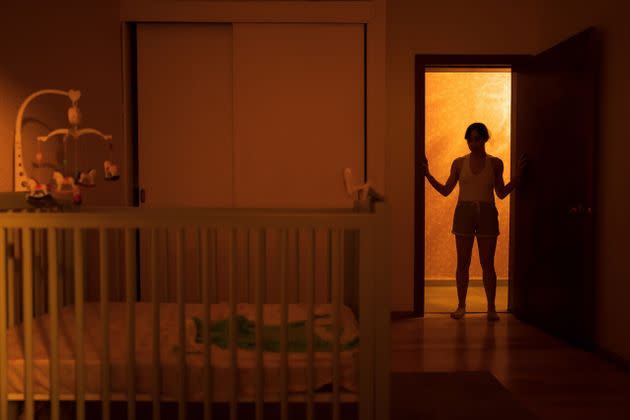
Valeria (Natalia Solián) in a scene from "Huesera."
“Huesera”
Writer-director Michelle Garza Cervera could have easily gone down the path of many other pregnancy horror films that have tried to follow “Rosemary’s Baby.” But the Mexican film “Huesera” not only terrifies its expectant mother (Natalia Solián) physically inside her womb, the once enthusiastic wife of a humble and loving man soon is plagued by unfulfilled desires as a macabre force preys upon her at home. This is a genuinely frightening and visceral horror about motherhood, self-preservation and the parts of ourselves we lose on the way to achieving someone else’s dreams. — Frederick
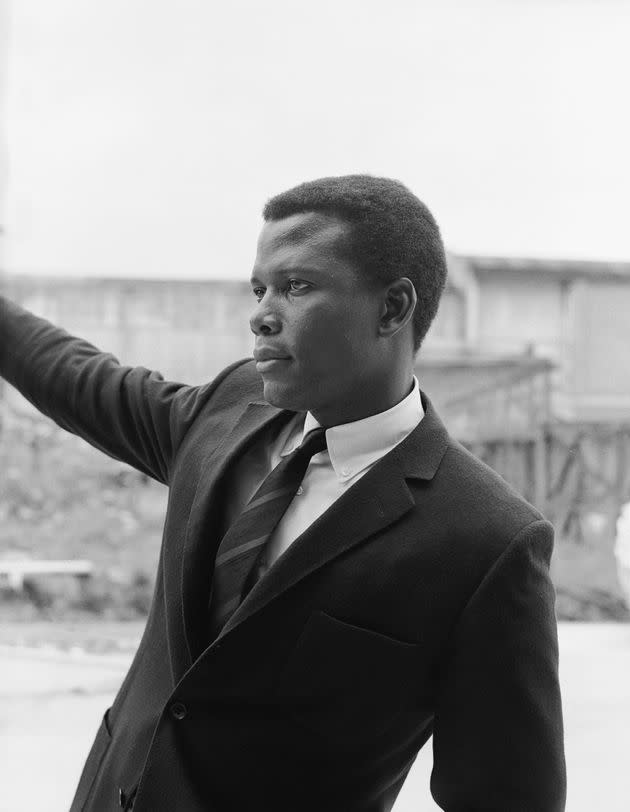
An archival image of Sidney Poitier in "Sidney."
“Sidney”
It’s long been discussed how much the late Sidney Poitier paved the way for other Black talent in Hollywood, and how he was a thespian and civil rights advocate long before social media made it cool and expected. But few people talk about the quiet things out loud: like how his politics sometimes clashed with those of his friend and contemporary Harry Belafonte, or his yearslong extramarital affair with Diahann Carroll, or how his respectability made him become known as an “Uncle Tom” in white Hollywood. Director Reginald Hudlin’s tribute to the actor, aptly titled “Sidney,” examines his intricacies and pitfalls, and compels those who admire him most ― including Oprah Winfrey and Denzel Washington ― to come to terms with all the things left under-discussed. And in doing so, we get a far more interesting portrait of the well-known figure. — Frederick

Tess (Georgina Campbell) in a scene from "Barbarian."
“Barbarian”
A mainstream horror movie that has you screaming at every dumb decision the characters make for a cool 90 minutes isn’t exactly unusual. But one that manages to still terrify and surprise you, and actually confronts its real-life horrors, isn’t something that happens every day. Writer-director Zach Cregger’s “Barbarian” is so creepy, thoroughly engaging and webbed within millennial culture — its initial terror is an Airbnb mishap — that you’re almost instantly invested in its story. Why would a young woman (Georgina Campbell), particularly a biracial Black woman, opt to stay at an Airbnb double booked by a strange white man (Bill Skarsgård) on a rainy night in a dilapidated neighborhood? Why does the basement extend to an eerie, dark passageway with multiple windowless rooms? And what does any of this have to do with the problematic actor (Justin Long) who’s just been fired from a pilot after rape allegations against him emerge? “Barbarian” has a way of leading the audience down dark paths before it switches to a whole other kind of house of horrors. It’s remarkable. — Frederick
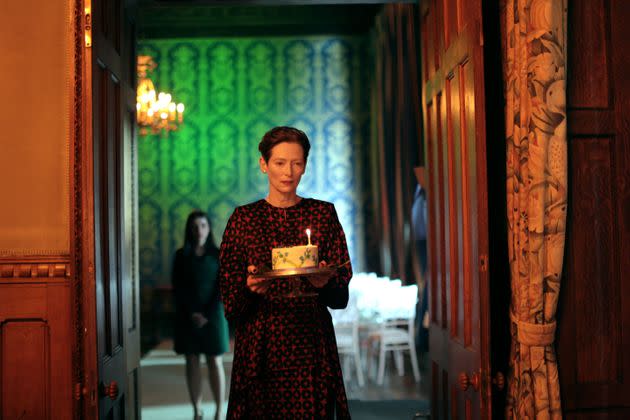
Julie (Tilda Swinton) in "The Eternal Daughter."
“The Eternal Daughter”
Slow burns aren’t easy sells. But there’s a simmering uneasiness beneath the surface of filmmaker Joanna Hogg’s “The Eternal Daughter” that keeps you tuned in to its very unsettling end. It’s a simple enough premise: Tilda Swinton plays a woman who returns for what she hopes to be a lovely stay at her old family home with her elderly mother in tow, and soon discovers that nothing and no one at the now deserted hotel is as it seems. “The Eternal Daughter” is both a ghost story and a devastating look at a mother-daughter relationship that has left a woman nearly crippled by all the things she never said or did. — Frederick
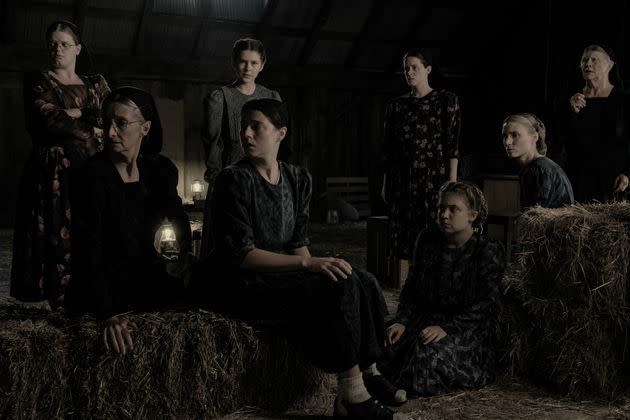
Michelle McLeod, Sheila McCarthy, Liv McNeil, Jessie Buckley, Claire Foy, Kate Hallett, Rooney Mara and Judith Ivey in a scene from "Women Talking."
“Women Talking”
There’s something quietly powerful about a movie that centers a fictional group of Mennonite women who gather in a barn to discuss their choices. For one thing, it’s refreshing to see women of various mindsets come together strictly to decide their own fate. They’ve been raped, psychologically terrorized and demoralized by the men in their village — as have their daughters. Yet, their faith leaves them with important questions: Should they do nothing? Should they stay and fight? Or should they leave? We never see the brutality done to them or even the male perpetrators, because the movie isn’t about it or them. “Women Talking,” from writer-director Sarah Polley, is profound because it centers a gathering of women you might least expect claiming their agency. — Frederick
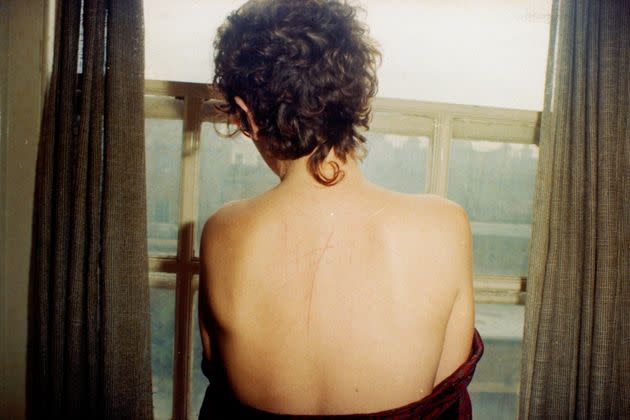
Nan Goldin's "Self portrait with scratched back after sex, London," 1978.
“All the Beauty and the Bloodshed”
In recent years, I’ve followed the activism of photographer Nan Goldin, who has used her clout to call out the Sackler family’s ties to the opioid crisis and get prominent cultural institutions like the Metropolitan Museum of Art to finally sever their financial ties to the family and remove its name from their storied halls. That in and of itself is a fascinating story. But there’s so much more I didn’t know about Goldin, which is why it’s so effective that Oscar-winning director Laura Poitras’ new documentary braids the story of Goldin’s activism with her extraordinary career. As her distinctive work gained prominence in the 1980s, Goldin lost many of her friends and peers to the AIDS crisis. So it makes sense that many of her demonstrations against the Sacklers and the cultural institutions who’ve taken money from them have involved similar public actions as those of groups like ACT UP. Seeing the parallels between past and present is a fascinating way to pay tribute to the work of a one-of-a-kind personality like Goldin. — Fang

Megan Twohey (Carey Mulligan) and Jodi Kantor (Zoe Kazan) in a scene from "She Said."
“She Said”
“She Said” is a great example of how to make a movie about abuse that gives minimal attention to the abuser. Adapted from the work of New York Times reporters Jodi Kantor and Megan Twohey (played by Zoe Kazan and Carey Mulligan), the film is a primer on the reporting process. Director Maria Schrader and screenwriter Rebecca Lenkiewicz smartly organize the film around conversations with the reporters’ sources, including two standout scenes — almost like their own one-act plays within the film — featuring Jennifer Ehle and Samantha Morton as two of the Harvey Weinstein survivors and whistleblowers. At times, you could wonder if the film’s economical and procedural approach might feel rote. But the subject matter demands not reinventing the wheel or trying something too flashy. There’s a reason other great journalism movies (e.g., “All the President’s Men,” “Broadcast News” and “Spotlight”) unfold in a similarly measured style: It works. (Though looking at that list, we’re far overdue for a big journalism movie about journalists of color.) — Fang

Tom Cruise in a scene from "Top Gun: Maverick."
“Top Gun: Maverick”
At last, Tom Cruise fans got to see “Top Gun: Maverick” this year. If you remember, the film had been delayed, delayed and delayed again just like a flight out of town over the holidays. Thankfully, the film was the perfect follow-up to its predecessor and was well worth the wait. It was action-packed, filled with incredible stars (Glen Powell loves a role where he’s not on the ground and I’m here for it), and had a pretty solid storyline: Maverick (Tom Cruise) faces his past while guiding his deceased best friend’s son (Miles Teller) on how to accomplish a very dangerous mission. I just saw the film a couple of months ago, on a flight no less. The film was recently re-released in theaters and I might just find my way to the movies to see it in surround sound. — Evans
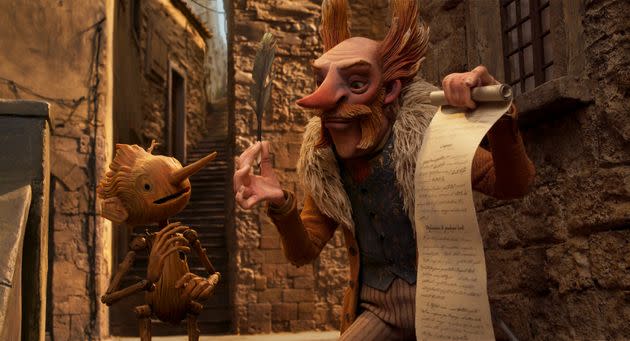
Pinocchio (voiced by Gregory Mann) and Count Volpe (voiced by Christoph Waltz) in a scene from "Guillermo del Toro's Pinocchio."
“Guillermo del Toro’s Pinocchio”
Really, the only reason to watch yet another “Pinocchio” movie is if filmmaker Guillermo del Toro is behind it — because you already know that it will be the darkest, most twisted and somehow still beautiful adaptation you’ll see. Thankfully, del Toro lives up to that reputation by breathing new life into a century-old story about a boy made of wood and his father, now with treacherous figures threatening their journeys. Complete with striking stop-motion animation, “Guillermo del Toro’s Pinocchio” delivers a visceral and heartrending update to the timeless tale about grief, goodness and the love between a dad and son. — Frederick

 Yahoo Finance
Yahoo Finance 